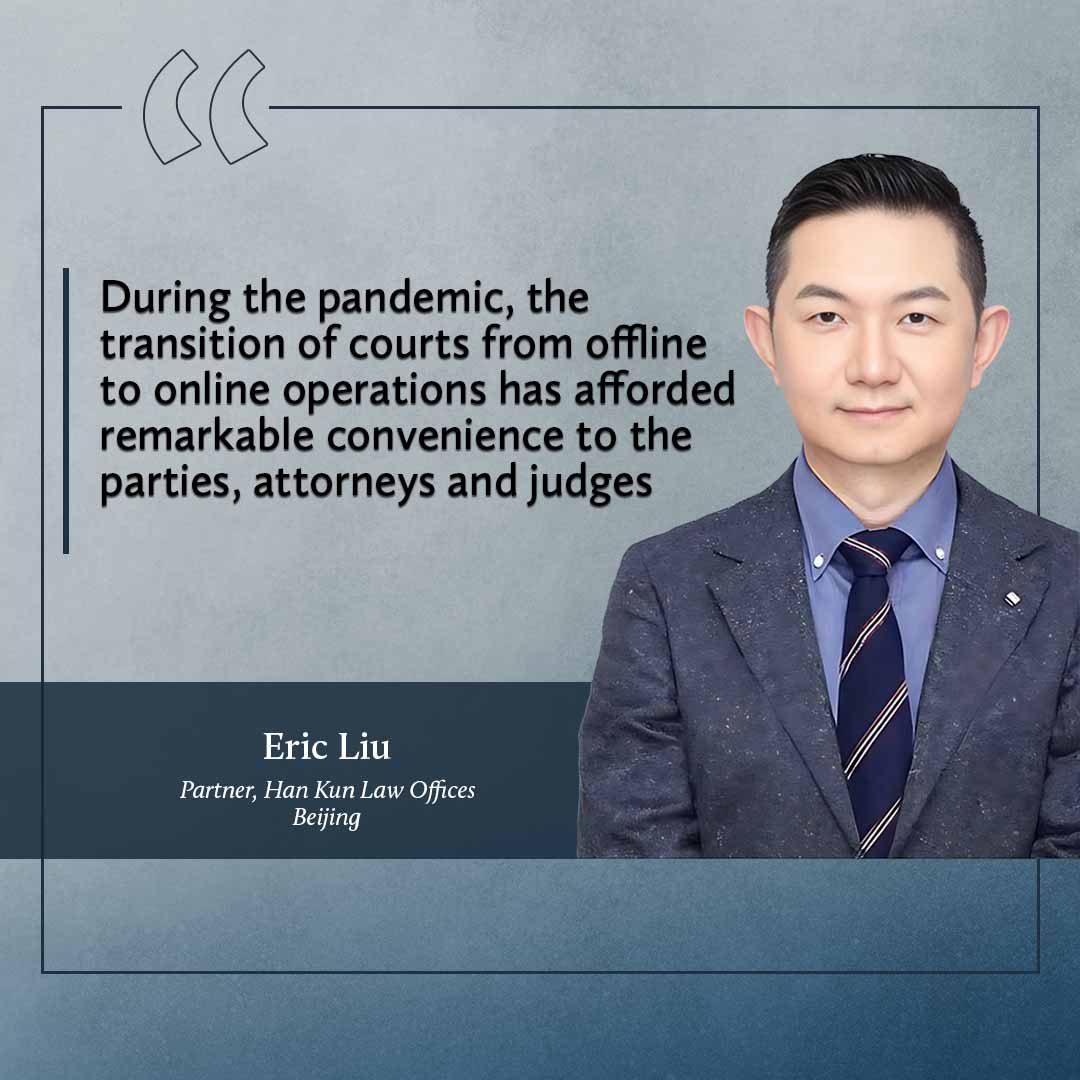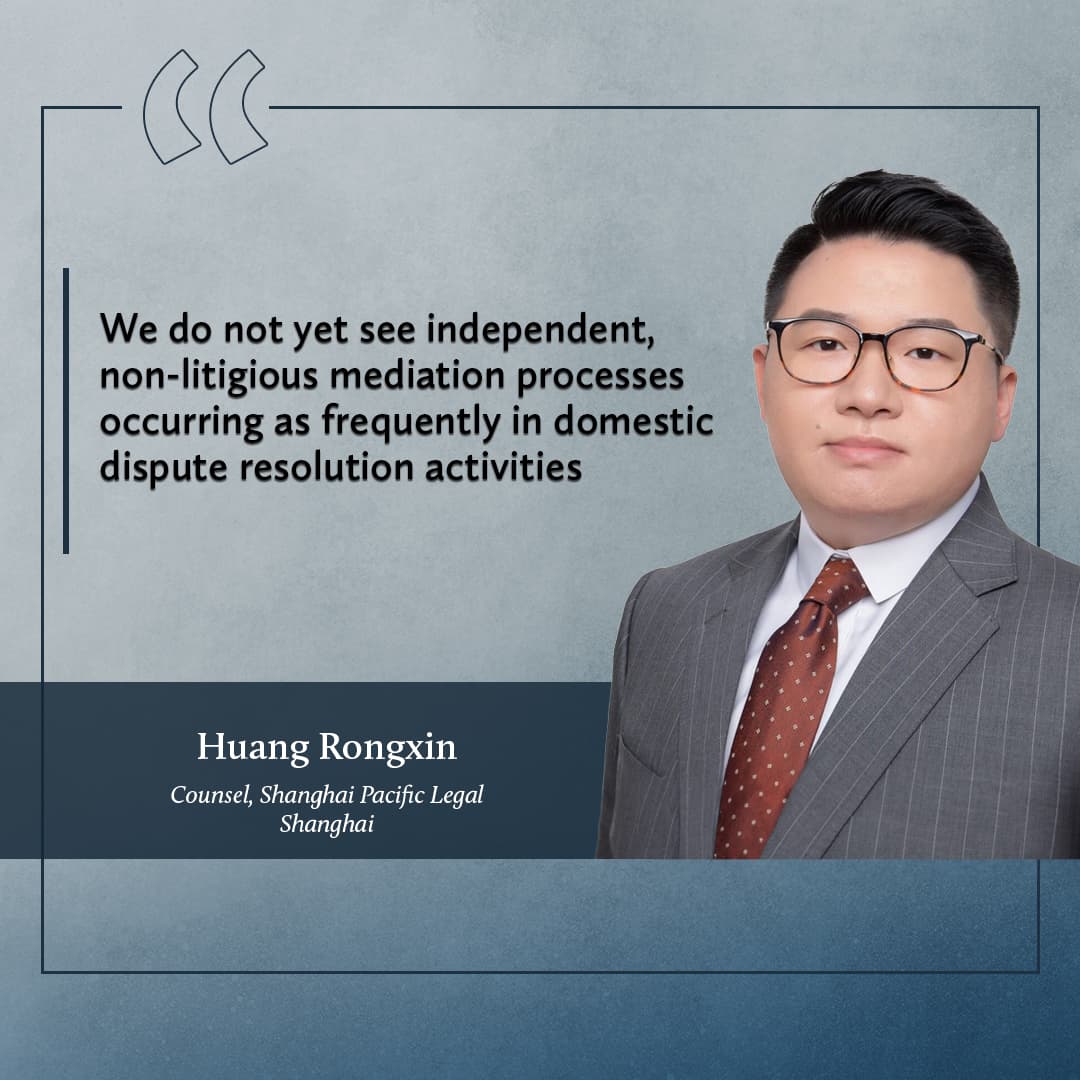China is emerging as a leader in legal technology as it reforms and modernises its judicial and dispute resolution frameworks. Vanessa Ip reports
Is that your replacement, being uncrated next to your desk? The embrace of digital technologies and technology-enabled services within global judicial and dispute resolution frameworks was accelerated by the impact of covid-19. Many jurisdictions, including China, continue to forge ahead with tech-related reforms as part of their post-pandemic recovery agendas.
Smarter justice
Lockdowns and remote working became commonplace during the pandemic years. Courts, dispute resolution bodies and consumer platforms around the world were pushed to adapt and implement online processes, many of which have now become permanent features of China’s dispute resolution framework.
According to Yang Chen, managing partner and director of Jincheng Tongda & Neal (JT&N) in Beijing, virtual hearings have become a “new norm” in Chinese litigation, arbitration and mediation proceedings. “Courts, parties, councils as well as arbitral tribunals are becoming increasingly used to conducting virtual hearings with the assistance of digital tools,” he says.
Eric Liu, partner, and Zeng Ying, counsel at Han Kun Law Offices in Beijing, say that “smart court” is turning from an idea into reality. “During the pandemic, the transition of courts from offline to online operations has afforded remarkable convenience to the parties, attorneys and judges,” says Liu.
“As far as we are aware … in 2023 two leading arbitration institutions in mainland China published new rules. Most recently, the China International Economic and Trade Arbitration Commission (CIETAC) issued its 2024 version of the arbitration rules. Changes can be summarised in six areas, with the common goal of improving efficiency while sufficiently respecting party autonomy. Under the new rules, among other things, extensive application of digitisation in arbitration procedures is encouraged.”
Chinese courts have gone a step further by mandating the adoption of artificial intelligence (AI) in judicial practice.
On 8 December 2022, the Supreme People’s Court issued the Opinions of Regulating and Strengthening the Applications of Artificial Intelligence in the Judicial Fields. It stated the goal was to “achieve a higher level of digital justice” by integrating AI with judicial work and by constructing smart courts in China. The opinions mandate that all courts will implement “improved” functional systems for the application of AI by 2025, and that these functional systems must reach “full application effectiveness” by 2030.
Liu and Zeng say that AI is receiving wide acceptance and broad application within Chinese courts. “We can imagine various settings where the engagement of AI could significantly enhance productivity, improve efficiency, reduce costs and relieve practitioners of repetitive tasks, allowing them to focus on more attention-demanding and delicate analytical work,” says Zeng.
Liu and Zeng say AI might be enlisted to conduct massive searches and analyse large volumes of data to identify and present patterns and trends of events so that attorneys can efficiently collect and manage evidence in a more organised manner.
AI might easily locate the most relevant statutes, cases, regulations and judicial interpretations from vast legal databases. In complex IP infringement cases, AI tools and algorithms may be called upon to conduct technical comparisons in a confident, neutral and secure way. Importantly, AI research can ensure confidentiality and neutrality, which are two major concerns of human-conducted reviews.
“In China, there is a particular division within the court system that is responsible for accepting and screening … filings, and rejecting cases if a complaint does not meet the pleading standard,” says Liu.
“When a filing can be submitted to an AI-powered screening platform, the judges working in the filing division will have more time to deal with pre-trial mediation work.”
Elephant in the courtroom
There are mixed views about whether AI will replace traditional legal practitioners and services. However, there is general agreement that, although AI disruption is inevitable, generative AI represents more of an opportunity for innovation and efficiency than a potential threat to the profession.
For Yue Qiang, a senior partner at Hai Run Law Firm in Beijing, traditional legal industry practices will continue be challenged by AI. “I believe that AI is profoundly changing the ecosystem of the legal industry, and a large number of basic legal consulting services will disappear quickly, which may eliminate a group of legal practitioners,” he says.
“However, I can also see the benefits. Case retrieval has become easier, formatted document writing has become more efficient, and AI legal products can help us better handle cases.”
Others are confident that AI cannot – and arguably, should not – replace human intelligence.
According to Liu, the future of AI in dispute resolution in China will likely involve a combination of human expertise and AI-driven tools. “While adjudicators and advocates will remain the key players in legal actions, AI is expected to hold great potential to assist the dispute resolution process in a transformative way,” he says.
Huang Rongxin, a counsel at Shanghai Pacific Legal, says AI “cannot completely replace the role of dispute resolution lawyers”, but adds it “will have a very significant impact on the dispute resolution area in terms of improving trial efficiency and material preparation”.
Catherine Guo, a partner at Anli Partners in Beijing, predicts human judges will be safe from AI replacement, despite the technological potential to improve the judicial system.
“Chinese courts are the world’s first to release judicial application opinions on blockchain and AI, clarifying the functional role of AI in assisting trials, and ensuring that judicial decisions are always made by judges, judicial powers are always exercised by trial organisations, and judicial responsibility is ultimately borne by the adjudicators,” she says.
You must be a
subscribersubscribersubscribersubscriber
to read this content, please
subscribesubscribesubscribesubscribe
today.
For group subscribers, please click here to access.
Interested in group subscription? Please contact us.

























